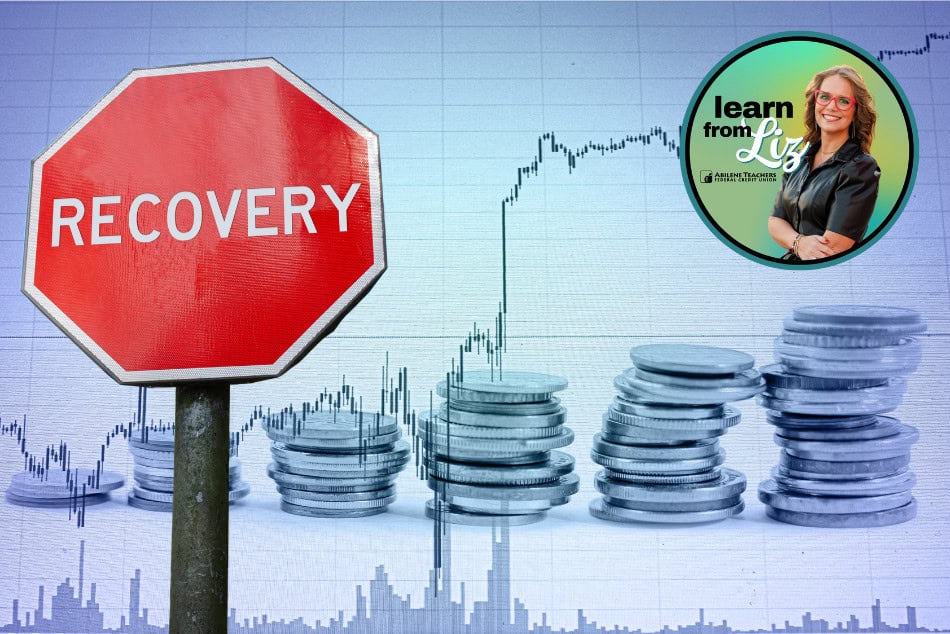12 Steps to Financial Wellness – Step 3: Pay Down Debt

Can you believe we are already in March? It is hard to believe that we are already on Step 3 of our 12 step program. So far you have tracked your spending and designed a budget for your monthly expenses. In this next step, you’ll create a plan for paying down your existing debt.
Consumer debt can be one of the biggest challenges to realizing good financial wellness. Credit card companies design their business model in a way that makes it easy to get stuck paying off debt for years. But they can be outsmarted! With some intentional action and commitment, reaching true financial wellness and being financially healthy is possible.
Below, I’ve outlined how to pay down debt in five simple steps, along with three debt-paying strategies to avoid.
Organize your debt
Before you get started, determine how much debt you must pay off. List every credit card you own that has an outstanding balance and jot down the amount owed to each. Next, list the interest rate of each card. Do this for any other fixed installment loan debt you have as well. These numbers will help you build a debt-payoff plan in the next two steps.
Add up the amounts owed on each account to see your total outstanding debt.
Choose your debt-crushing method
There are two main approaches people use for getting rid of their debt:
- The snowball method involves paying off your smallest debt first, and then moving to the next-smallest debt until all debts have been paid off.
- The avalanche method involves getting rid of the debt that has the highest interest rate first and moving on to the debt with the next-highest rate until all debts are paid off.
Each method has advantages and drawbacks. The snowball method provides frequent motivation as debts are paid off sooner, but it will probably involve paying more overall interest. The avalanche method, on the other hand, generally saves the borrower a significant amount they pay in interest, but it can take a while to generate results.
Choose the method that makes the most sense for your personal and financial circumstances. To determine which method works best for you, check out our Banzai Coach and play with the numbers.
Maximize your payments
Once you’ve chosen your debt-crushing method, it’s time to find ways to maximize your monthly credit card payments. You can do this by trimming your spending in one budget category and channeling that money toward paying down your debt. You can also find ways to pad your pocket with extra cash for your payments, such as freelancing for hire or selling your creations on a platform, like Etsy, if you’re the crafty type.
Once you’ve determined how much you can afford to pay each month, you can create a debt-payoff plan using the systems you’ve adopted in Step 1.
Consider a debt consolidation loan
For some consumers, the most challenging part of paying down debt is managing multiple payments across several credit card accounts. With several monthly debt payments to make, it can be complicated to remember them all. It can also feel like the monthly payments are only going toward interest.
A debt consolidation loan can change all that. When you consolidate debts to one lower-interest loan, it’s a lot easier to manage the monthly payments. Plus, the savings on interest payments can be significant, especially if the new loan has a significantly lower rate.
If this approach sounds favorable, consider taking out a personal loan from Abilene Teachers FCU. The loan will provide you with the funds you need to pay off your credit card bills and leave you with a single monthly payment.
Negotiate with your creditors
Many credit card companies are willing to lower your interest rate once you prove you are serious about paying down debt. After kicking off your debt repayment plan, it’s worthwhile to contact each credit card company to discuss your options. At the very least, see if you can get the company behind the first debt on your list to lower your rate. Also, remember that ATFCU offers a lower than average interest rate credit card. Where the average credit card interest rate is 24.37%, Abilene Teachers’ credit card interest rates vary between 14.99% and 17.99%.
3 Debt-Crushing strategies to avoid:
As you work toward paying down your debt, beware of these debt-crushing strategies, which may do more harm than good:
- Debt settlement. Debt settlement services offer to lower your interest rates and boost your credit score in a short amount of time – for a fee. Unfortunately, though, many of these companies are fronts for scammers and should be avoided. Others are for profit companies that view you as an income source. Please note that there are legitimate debt settlement companies, usually nonprofit organizations, that can do some negotiating for you. Research extremely carefully to find these gems. The National Foundation for Credit Counseling (nfcc) is a good place to start.
- 401(k) loans. It’s rarely a good idea to borrow from the future you. Withdrawing funds from your 401(k) to pay down debt can mean getting hit with all sorts of penalties, fees and taxes.
- Home Equity Line of Credit (HELOC). Borrowing against your home means putting yourself at risk of losing your home.
Regardless of the strategy you choose, or the methods you use for paying off your debt, commit to not adding more charges onto your card while paying it down. Paying off a large amount of debt will take time and willpower, but living debt-free is key to financial wellness. Best of luck on your debt-crushing journey!


